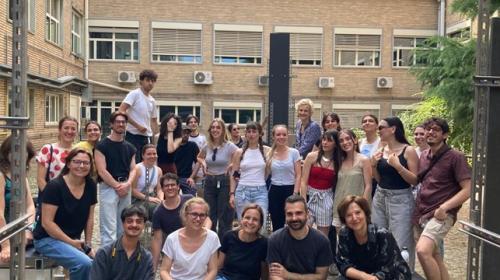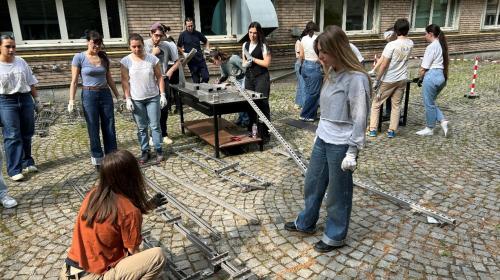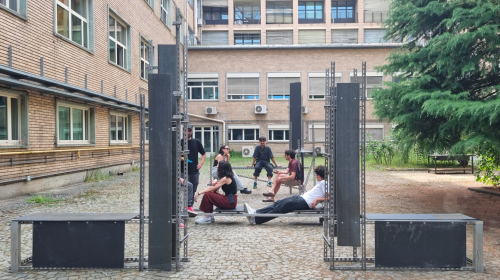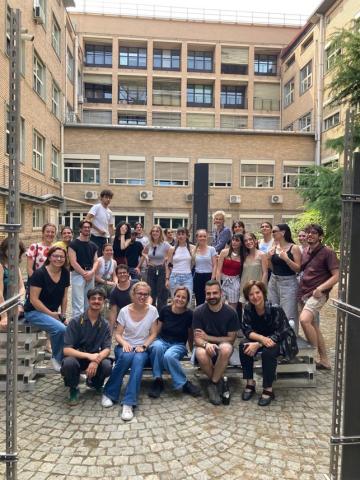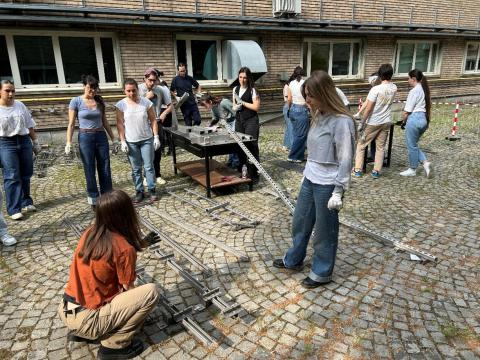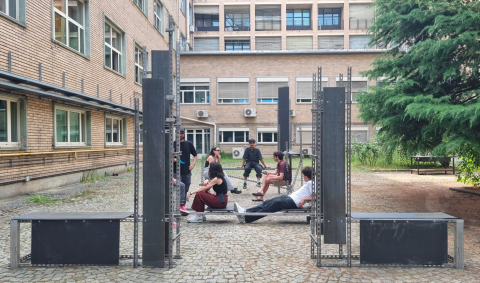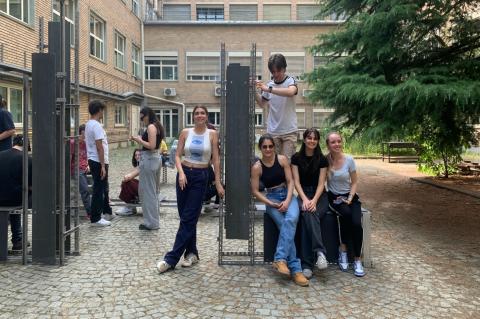
Circular Design Sprint: an experimental initiative at DISAT department

Giving a second life to waste materials, this is the objective of the "Circular Design Sprint" educational experiment which involved a group of students from the Master's degree course in Architecture and Design. It was an ambitious challenge: to use materials recovered from the facades of the "scavalchi" construction site – the buildings on Corso Castelfidardo – to design and furnish a courtyard, specifically the internal courtyard of the Department of Applied Science and Technology-DISAT, in just eight hours.
Eight hours were therefore sufficient to create 3 prototypes for furnishing the space, XY, Slaydah and cENTRO. The XY prototype was designed to mark an access point to the courtyard – representing a kind of entrance portal into the space – and is constituted by two juxtaposed modules: the project indeed reproduces two Cartesian axes and consists of a seat on the X-axis and a towering portion – a landmark – on the Y-axis.
The Slaydah prototype, conceived instead as a playful bench that integrates movement, consists of sliding seats on a track and tables of different heights, usable for leaning or for sitting depending on the configuration chosen by the users. In this case, multiple modules can be arranged in a line, in a cross, or to form a broken line.
The cENTRO prototype, finally, develops multi-purpose seats and support surfaces at increasing heights that follow one another, emphasizing the vertical aspiration of the project, while the C-shaped plan invites the act of gathering and collective use.
Made with metal profiles and waste fiber cement slabs, the three prototypes are all configured as modular totems, which can be juxtaposed, defining new centralities in the open space and of telling the second life of the discarded materials with which they were built.
The presentation of the prototypes took place on June 13th last in the presence of the Vice-Rector for Sustainable Campus and Living Lab Patrizia Lombardi and Professor Debora Fino, director of DISAT and coordinator of the Green Team Materials Working Group of the University.
The educational experiment is part of the broader framework of activities promoted by the course "Designing and Developing the Circular Economy", offered in the academic year 2024/25 and coordinated by professors Elena Montacchini and Silvia Tedesco and by the research fellow of the Department of Architecture and Design-DAD Nicolò Di Prima. Collaborating for the successful outcome of the project were also the Laboratory of Innovative Technological Systems-LaSTIn – affiliated with DAD – the Green Team and the University's Sustainability Service; the initiative therefore saw the support, in the realization of the installations, of DISAT and its laboratory areas, and of the PROGES Directorate – Design, Management, Building, and Safety.
